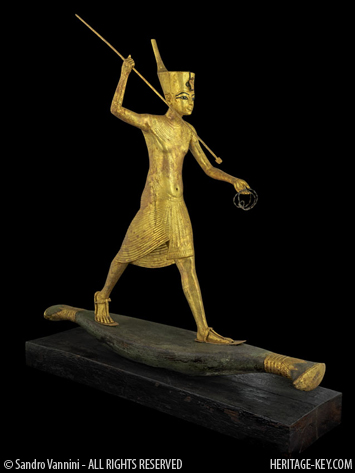 After 3,000 years its appears all but certain that the husband of the mummy of Djedmaatesankh has been found.
After 3,000 years its appears all but certain that the husband of the mummy of Djedmaatesankh has been found.
We know from her coffin that his name is Paankhntof. She was a musician at the temple of Amun-Re in Thebes – he was a doorkeeper at the same temple (actually something of an important position).
At the weekend symposium, researchers presented evidence that the mummy of her husband is now located at the Art Institute of Chicago.
Heritage Key broke the story a week ago here.
The research was presented by Gayle Gibson of the Royal Ontario Museum and Stephanie Holowka of the Hospital for Sick Children.
But first the most interesting aspect she may not be his only wife!
One curious thing researchers noted on the coffin of Djedmaatesankh was the grammar that was used to spell her husbands name. Its not clear what it means, but its possible that the writer is trying to get across the idea that Djedmaatesankh is his second wife something quite common given that many women in Ancient Egypt died in childbirth.
Its also possible wait for it that Djedmaatesankh is not his ONLY wife. He could have had two wives at the same time if he was rich enough, said Gibson. If thats the case than a re-uniting could be, ahem, a little more complicated than we think.
Now, for the evidence that the two are husband and wife – the research breaks down three ways:
The name: On Djedmaatesankhs coffin the name of her husband is spelled Paankhntof. The mummy at the Art Institute has its name spelled as Paankhenamun. This is very close and its possible that Paankhntof is a short form.
 Professor John Gee told Heritage Key that different spellings of the same name are quite common. In fact – you often find variations on the same coffin. Gee is not a member of the research team but watched the presentation.
Professor John Gee told Heritage Key that different spellings of the same name are quite common. In fact – you often find variations on the same coffin. Gee is not a member of the research team but watched the presentation.
The coffins: Gayle Gibson said that the coffins are both Theban and are dated to the same time (ca. 850 BC). There are also numerous similarities in the coffins just take a look at the two pictures in this blog.
Both have similar hair-doo (gold bands at the bottom of the hair), both have benu birds under the throat, both have wings, both have gold faces.
Perhaps the most interesting fact is that both of them have pairs of lion-snakes. Gibson says that, according to her research, between the 20th and 22nd dynasties this motif has only been seen on a total of 11 coffins. In later times it becomes very common.
Also, both coffins are un-provenanced with archaeologists not knowing which tomb they come from.
The CT scans: Both mummies have had CT-scans performed on them. The scans reveal evidence that they are related. Both have their arms crossed at the groin (somethingcommon among temple staff). Both have scarabs and amulets in the same position. Both have their abdomens packed, both have wrappings inside the head, both are age 30-40 years.
Both had their brains taken out of their right nostrils. Both have neck packs done in such a way that, the hyoid bone (which) forms part of the larynx, is pushed to the left side of them.
The, mummification and preservation given what were seeing on this were most likely performed by the same people, said Holowka.
No smoking gun
The one thing missing from the analysis is a smoking gun. Something that will prove with absolute certainty that these two are husband and wife.
They lived at exactly the same time, were embalmed by the same guy, thats pretty clear, there coffins were made by the same bunch of artists, said Gibson. Pretty sure to say they were related.
Thebes, at this time was a city in the tens of thousands. Not like a modern day metropolis. What are the odds of this being a co-incidence?
After she died, he appears to have outlived her by at least five years possibly as much as 15. Like Djedmaatesankh he consumed a rough diet and had a lot dental problems as he got older. When he passed away he had the ability to afford a coffin with the same level of quality as his wifes.
Will they be re-united?
Alas, it looks as if this couple is going to remains separated for the time being.
It would be such a lot of fun if we could get it together, Gibson said.
But bringing them together is risky. Conservation departments dont like you to so much as open the glass case because theyre very fragile.




